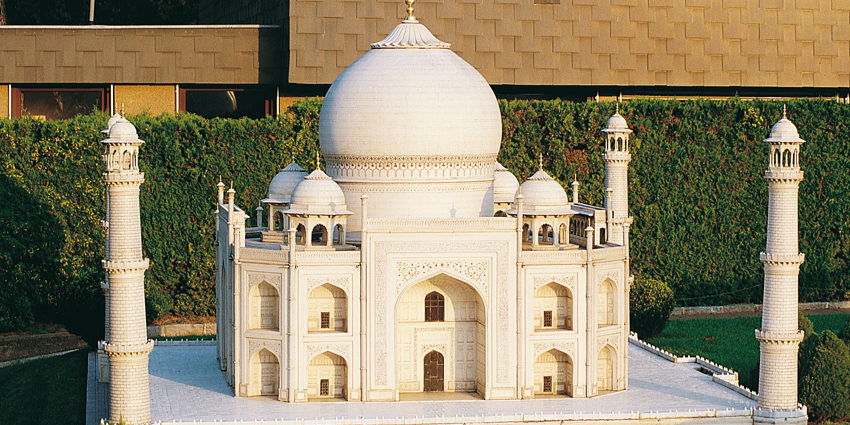Surely no other monarch has ever erected a more beautiful and mighty monument to his wife than Indian Grand Mogul Shah Jahan I. Inconsolable over the death of his favourite wife, Mumtaz Mahal, he wanted to grant her immortality with this largest declaration of love. She had accompanied her husband on a campaign in 1631 and died while giving birth to her 14th child. Work on the mausoleum commenced in 1632 and was to take 10 years with the rest of the complex requi-ring a further 5 years. Jahan employed the best master builders and artists from India, Samarkand, Turkey and Persia and the inter-play of a wide range of
different stylistic elements resulted in the most impressive example of Indo- Islamic architecture. Shah Jahan intended to build a matching monument in black marble for himself on the other side of the river. However, in 1658 he was dethroned by his own son and laid to rest next to his beloved wife in 1666. The main building has a square floor plan with sides of 57 m, the dome has a diameter of 28 m and the whole site spreads over 173,000 m².
Height: 2.65 m, with base 2.90 m
Area of building: 2.40 x 2.40 m
Diameter of dome: 1.2 m
Length of base: 3.81 m
Weight: 4.2 t without plinth
Materials: granite, concrete, synthetic resin, brass
Time taken: 2 years or 11,500 hours

